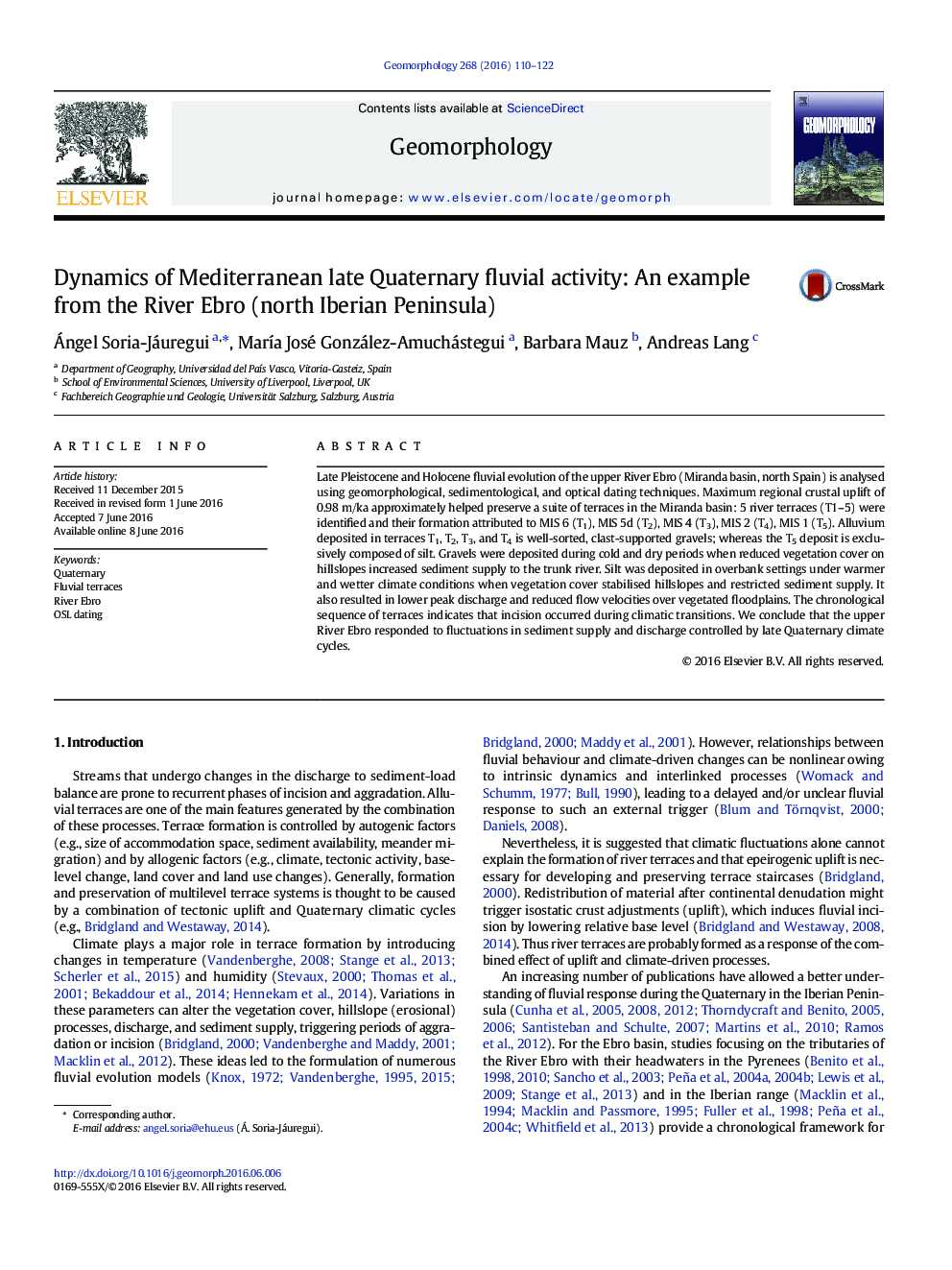| Article ID | Journal | Published Year | Pages | File Type |
|---|---|---|---|---|
| 4683966 | Geomorphology | 2016 | 13 Pages |
•Fluvial response of the River Ebro during the Quaternary is investigated.•The River Ebro has formed a sequence of five terrace levels around Miranda de Ebro (Spain).•Sediment aggradation occurred under glacial and interglacial conditions, whereas incision during climate transition phases.•Aggradation took place during MIS 6, 5, 4, 2 and 1.
Late Pleistocene and Holocene fluvial evolution of the upper River Ebro (Miranda basin, north Spain) is analysed using geomorphological, sedimentological, and optical dating techniques. Maximum regional crustal uplift of 0.98 m/ka approximately helped preserve a suite of terraces in the Miranda basin: 5 river terraces (T1–5) were identified and their formation attributed to MIS 6 (T1), MIS 5d (T2), MIS 4 (T3), MIS 2 (T4), MIS 1 (T5). Alluvium deposited in terraces T1, T2, T3, and T4 is well-sorted, clast-supported gravels; whereas the T5 deposit is exclusively composed of silt. Gravels were deposited during cold and dry periods when reduced vegetation cover on hillslopes increased sediment supply to the trunk river. Silt was deposited in overbank settings under warmer and wetter climate conditions when vegetation cover stabilised hillslopes and restricted sediment supply. It also resulted in lower peak discharge and reduced flow velocities over vegetated floodplains. The chronological sequence of terraces indicates that incision occurred during climatic transitions. We conclude that the upper River Ebro responded to fluctuations in sediment supply and discharge controlled by late Quaternary climate cycles.
